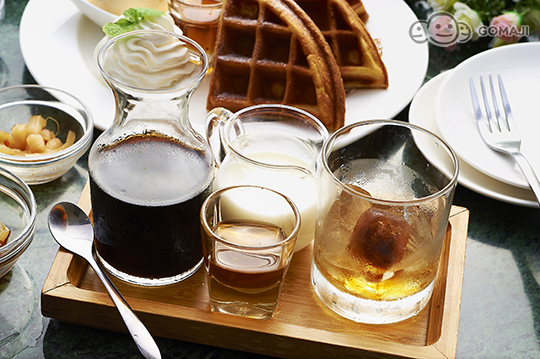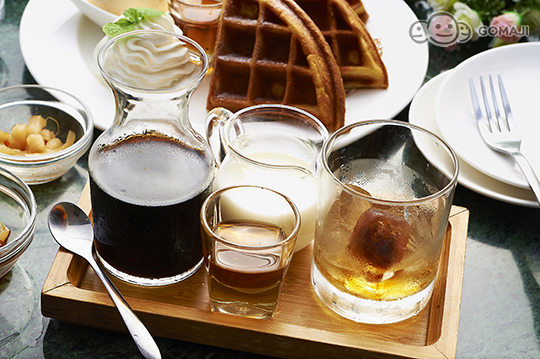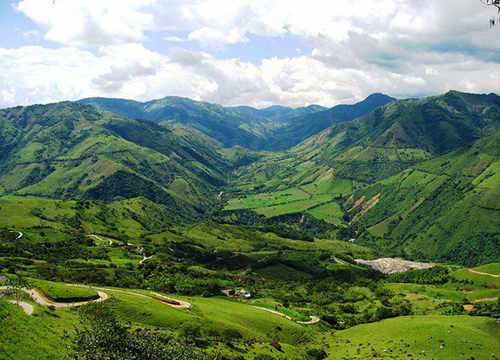Hawaii's most famous coffee beans and coffee producing areas are the characteristics of Kona kona Hawaiian Coffee.
Characteristics of Hawaiian Coffee
Hawaii, which spans latitudes 19 to 22 degrees, south of the Tropic of Cancer and blown by trade winds, is a perfect coffee-growing area. The 50th state of the United States, 2400 miles from the west coast of the United States, is the only state in the United States that produces coffee. Kona kona in Hawaii is also internationally renowned as one of the best coffee in the world. The volcanic soil and tropical climate, coupled with slight humidity and regular afternoon showers, create an ideal planting environment that can only appear in idyllic poetry, and add some meticulous but unique flavor characteristics to the coffee beans here.
Generally speaking, the viscosity of Hawaiian coffee is thinner and the aroma is medium-strong, which is in harmony with the brighter acidity.
Although coffee trees are grown commercially on all the islands of Hawaii, the Big Island currently has the largest number of coffee farms, about 650, but these coffee farms are relatively small, adding up to less than 2000 acres of plantation woodland, while only 25 coffee farms are operating on the islands of Maui, Molokai, Oahu and Kauai However, the coffee plantations in these places are much larger than those on the big island, and the total output is more than three times that of the big island coffee garden. Surprisingly, Kauai Island has the largest coffee-growing area of any island, with more than 4000 acres, but all are managed by the same operator, while Molokai Island has only 550 acres of coffee-growing land, with even fewer Maui and Oahu. Most Hawaiian coffee farmers still pick fresh coffee cherries to sell today, but in recent years more and more people are committed to adding value to their coffee bean products, so they mostly go to their own post-processing, drying, grinding and baking their own coffee beans.
Hawaii's most famous coffee bean and coffee producing area is Kona kona, which is located in the southwest of the Big Island, 20 miles long and 2 miles wide, covering the slopes of Hualalai and MaunaLoa. Only coffee beans grown in this area and subject to the most stringent certification standards can be sold under the trademark Kona. Today, about 100 farms have produced coffee beans that meet these standards, and more and more farms are expected to follow suit in the future. The Hawaiian Islands have long been recognized as a paradise on earth, and after nearly two centuries of efforts to grow coffee, the term Kona kona is almost synonymous with quality.
Now other Hawaiian islands are trying to catch up with Kona kona's high quality standards. Now Hawaii is really like Mark to many beach activities and coffee lovers. Twain's image is generally the most enjoyable place on earth.

Important Notice :
前街咖啡 FrontStreet Coffee has moved to new addredd:
FrontStreet Coffee Address: 315,Donghua East Road,GuangZhou
Tel:020 38364473
- Prev

Characteristics of Hawaiian Coffee introduction of Hawaiian Coffee varieties Hawaiian Coffee
Kona rare coffee Hawaiian special product, that is, the famous Kona rare coffee beans, it is famous for its perfect shape, full fruit and bright color. Another very important reason is that the taste is quite full-bodied and you can't put it down. This special flavor has the strong flavor of cinnamon spice.
- Next

The ancestor of coffee in Central and South America, the most important coffee producing area in the world, the coffee consumed around the world.
Central and South America is now the most important coffee producing area in the world, accounting for more than half of the coffee beans consumed in the world. When it comes to the ancestor of Coffee in Central and South America, we have to mention an island, Martinique, and a soldier, Deckley. In 1723, de Klee, a French naval officer who returned home on leave, got a coffee seedling. Dirkley finally planted the coffee seedling.
Related
- How did the Salvadoran coffee industry develop in Central America?
- What exactly does the golden cup extraction of coffee mean?
- The Origin of Coffee flower
- [2023 Starbucks World Earth Day] there are more meaningful things besides free Starbucks coffee!
- What kind of coffee is there in Spain? 9 Flavors of Spanish Coffee
- Aromatic African coffee| Kenya's coffee culture and historical production area
- Liberica Coffee Bean knowledge: the characteristics of Liberian Coffee beans of the three original species of Coffee beans
- The origin and formula of Spanish latte introduces the taste characteristics of Bombon coffee in Valencia, Spain.
- How to adjust the solution of over-extracted coffee
- What is the tasting period of coffee beans? What is the period of coffee and beans? How should coffee wake up and raise beans?

